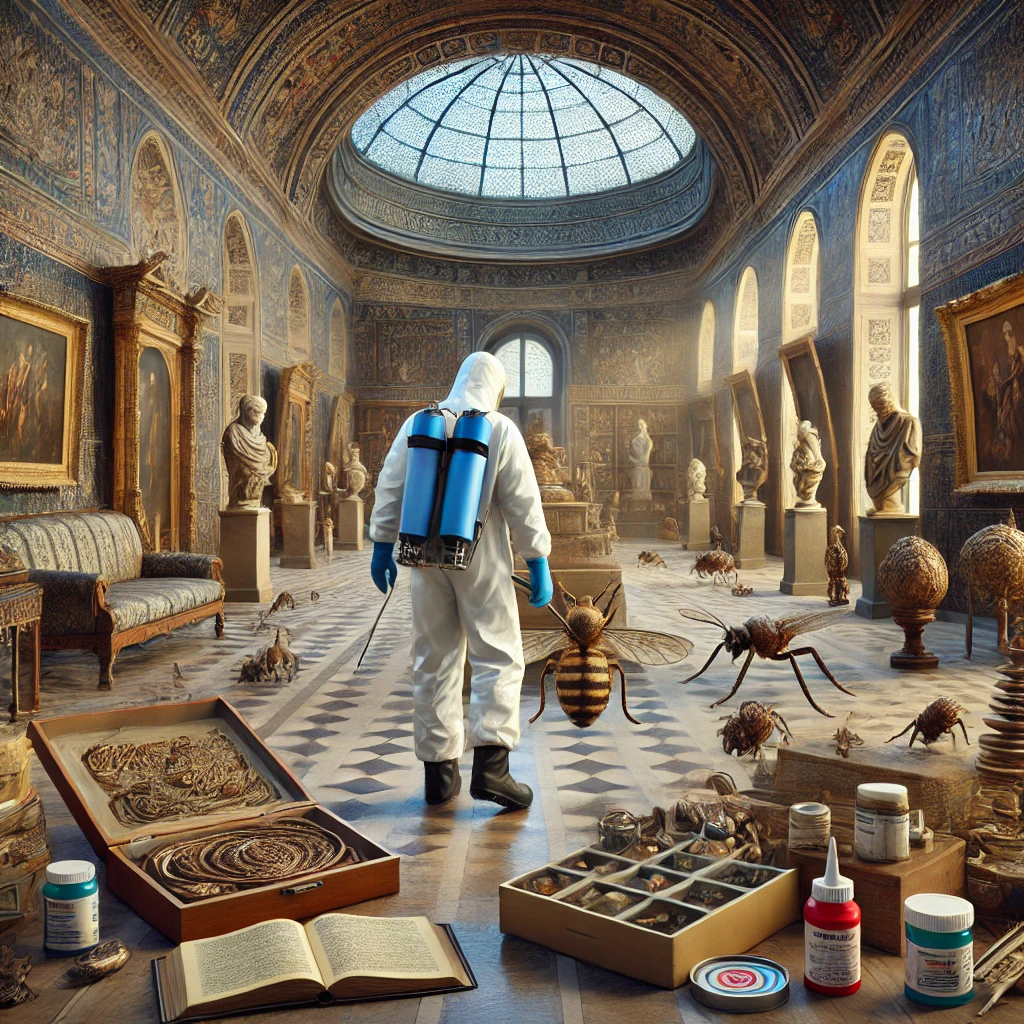
Introduction
Pest control is essential for preserving cultural heritage sites, which include historic buildings, monuments, and artifacts. These sites often face threats from various pests that can cause significant damage if not managed properly. Effective pest control helps protect these valuable assets from deterioration and loss, ensuring their preservation for future generations.
Impact of Pests on Cultural Heritage
Pests can have severe impacts on cultural heritage sites. Insects such as termites and beetles can damage wooden structures and artifacts, while rodents can cause physical destruction and contamination. Mold and fungi, often exacerbated by high humidity and poor ventilation, can degrade organic materials like textiles and paper. These pests not only threaten the physical integrity of heritage sites but also compromise their historical and aesthetic value.
Integrated Pest Management (IPM) for Heritage Sites
Integrated Pest Management (IPM) is a comprehensive approach to pest control that is highly effective for cultural heritage sites. IPM involves monitoring pest activity, identifying pest species, and using a combination of preventive measures and control methods. For heritage sites, IPM strategies may include environmental controls, such as regulating humidity and temperature, and using non-toxic treatments. Regular inspections and maintenance are crucial components of IPM to ensure early detection and intervention.
Preservation Techniques and Treatments
Specific preservation techniques are employed to protect cultural heritage sites from pests. For wooden artifacts and structures, treatments such as heat or cold treatments can eliminate pests without causing damage. In the case of textiles and paper, conservation treatments may include freezing, vacuuming, or applying insecticides in a controlled manner. The choice of treatment depends on the type of material and the extent of pest infestation. Collaboration with conservation specialists ensures that methods used are appropriate and effective.
Challenges and Solutions in Pest Control
Pest control in cultural heritage sites presents unique challenges. One challenge is balancing pest control measures with the need to avoid damaging sensitive materials. Additionally, heritage sites may have limited access for applying treatments, requiring innovative solutions. Solutions include using integrated pest management techniques that minimize chemical use and employing specialized conservation methods. Ongoing research and collaboration with experts help address these challenges and improve pest control practices.
Future Directions in Heritage Pest Management
The future of pest control in cultural heritage sites will likely involve advancements in technology and conservation practices. Innovations such as digital monitoring systems and more effective non-toxic treatments will enhance pest control efforts. Greater emphasis on preventive measures and early detection will also play a crucial role in preserving heritage sites. By adopting these advancements, the preservation of cultural heritage can be better safeguarded against the threats posed by pests.
Conclusion
Effective pest control is vital for preserving cultural heritage sites from the damaging effects of pests. By implementing integrated pest management strategies, employing appropriate preservation techniques, and addressing challenges through innovative solutions, heritage sites can be protected for future generations. Continued advancements in pest control technology and conservation practices will further enhance the preservation of these valuable cultural assets.

